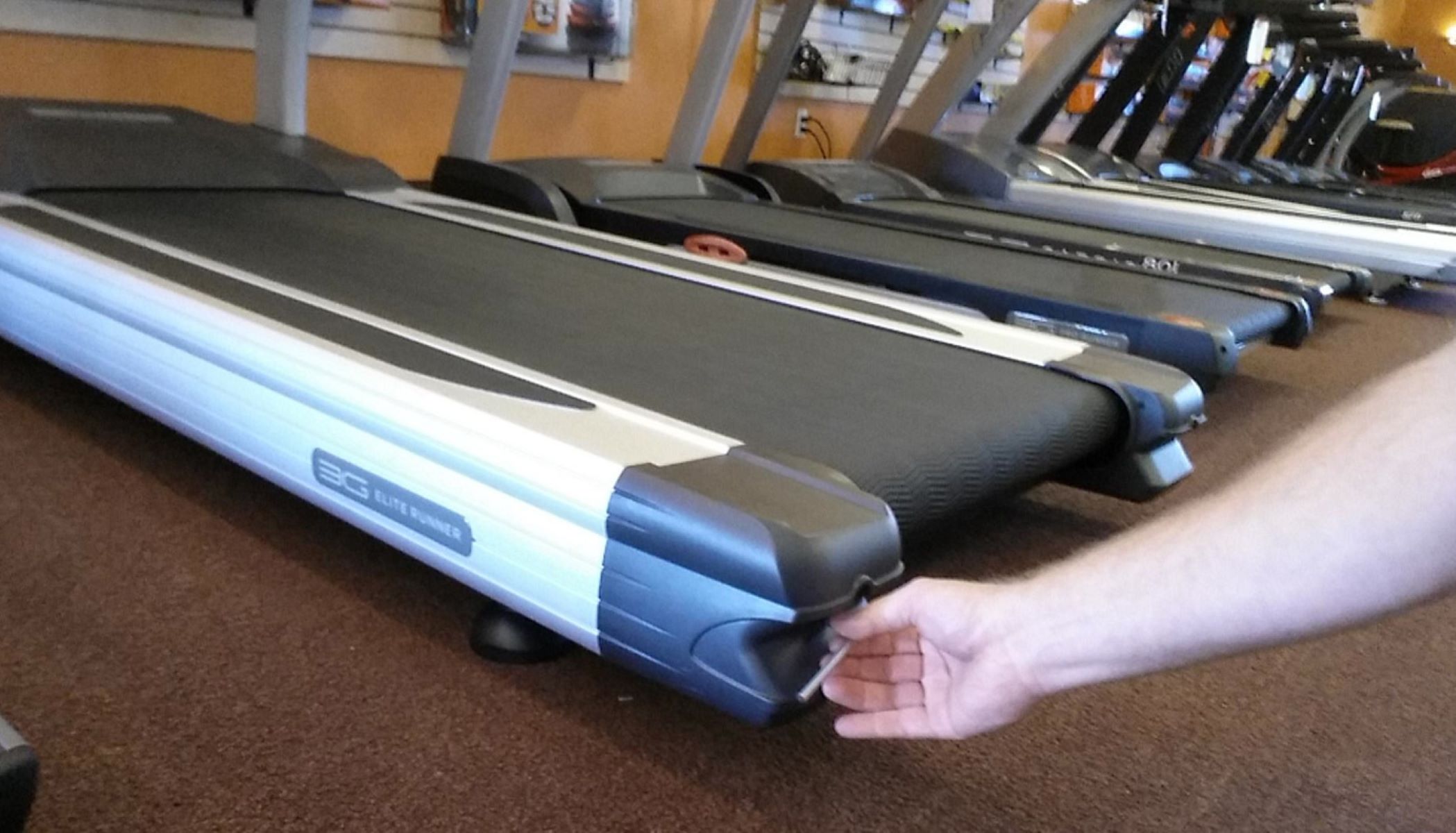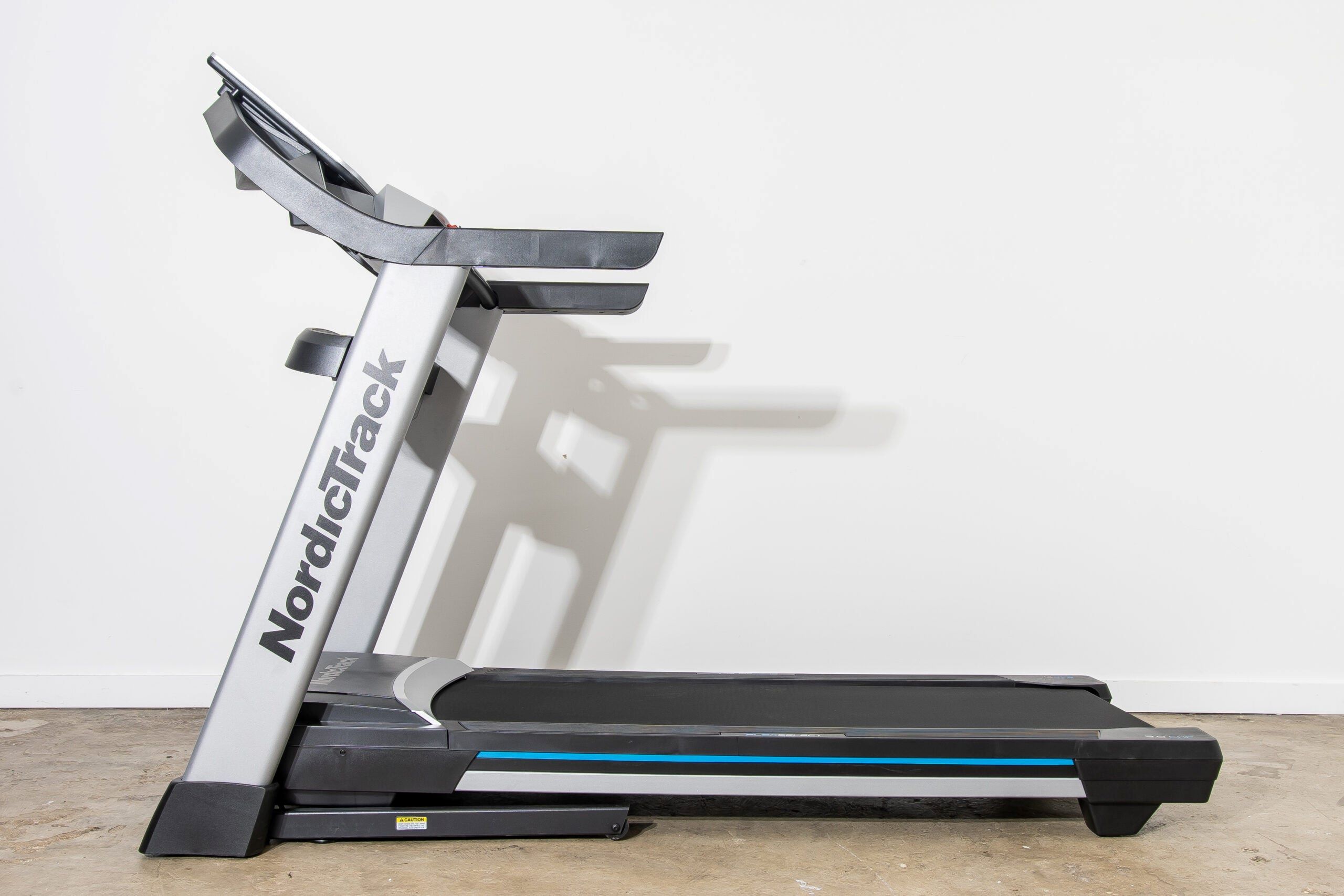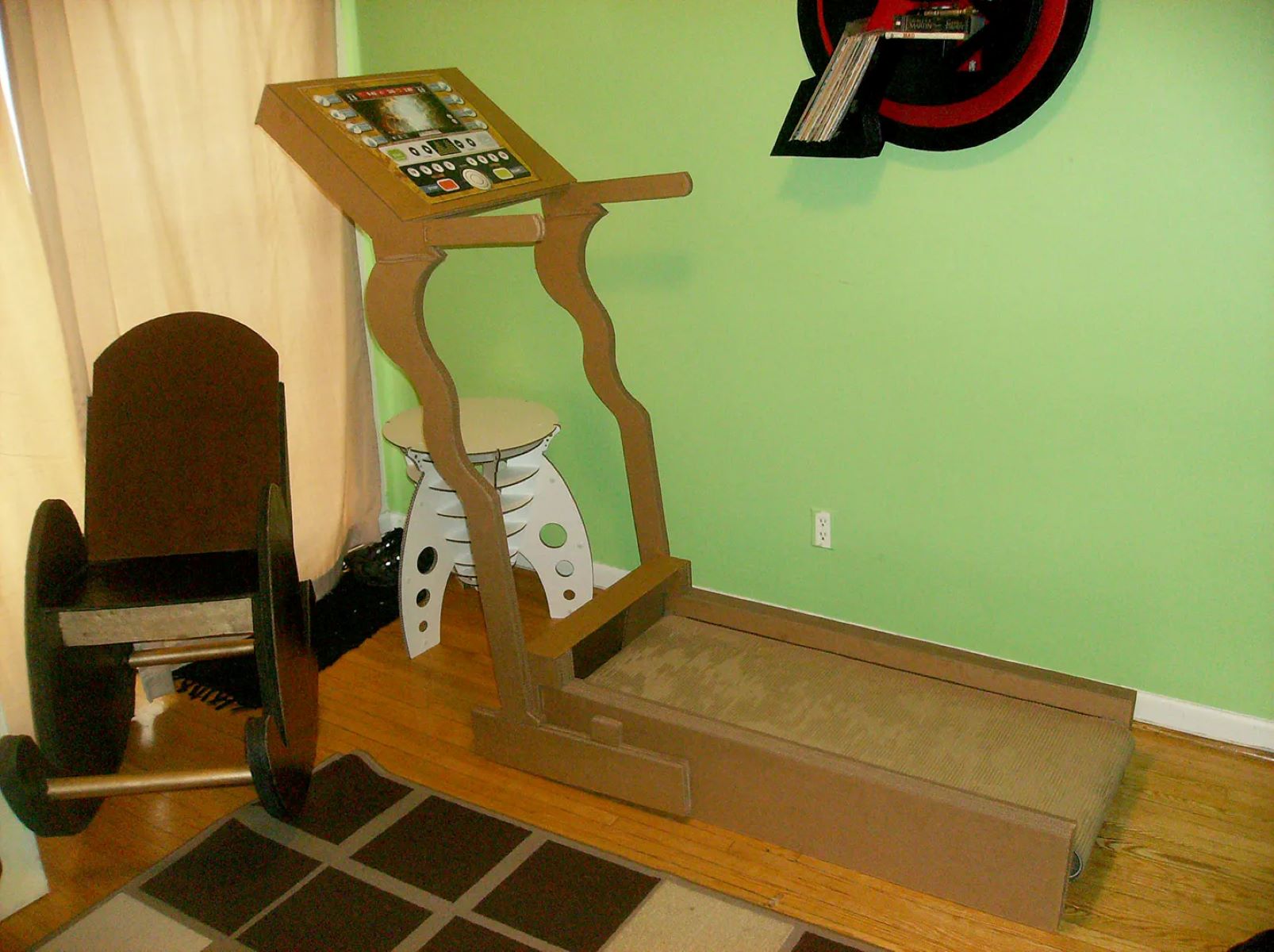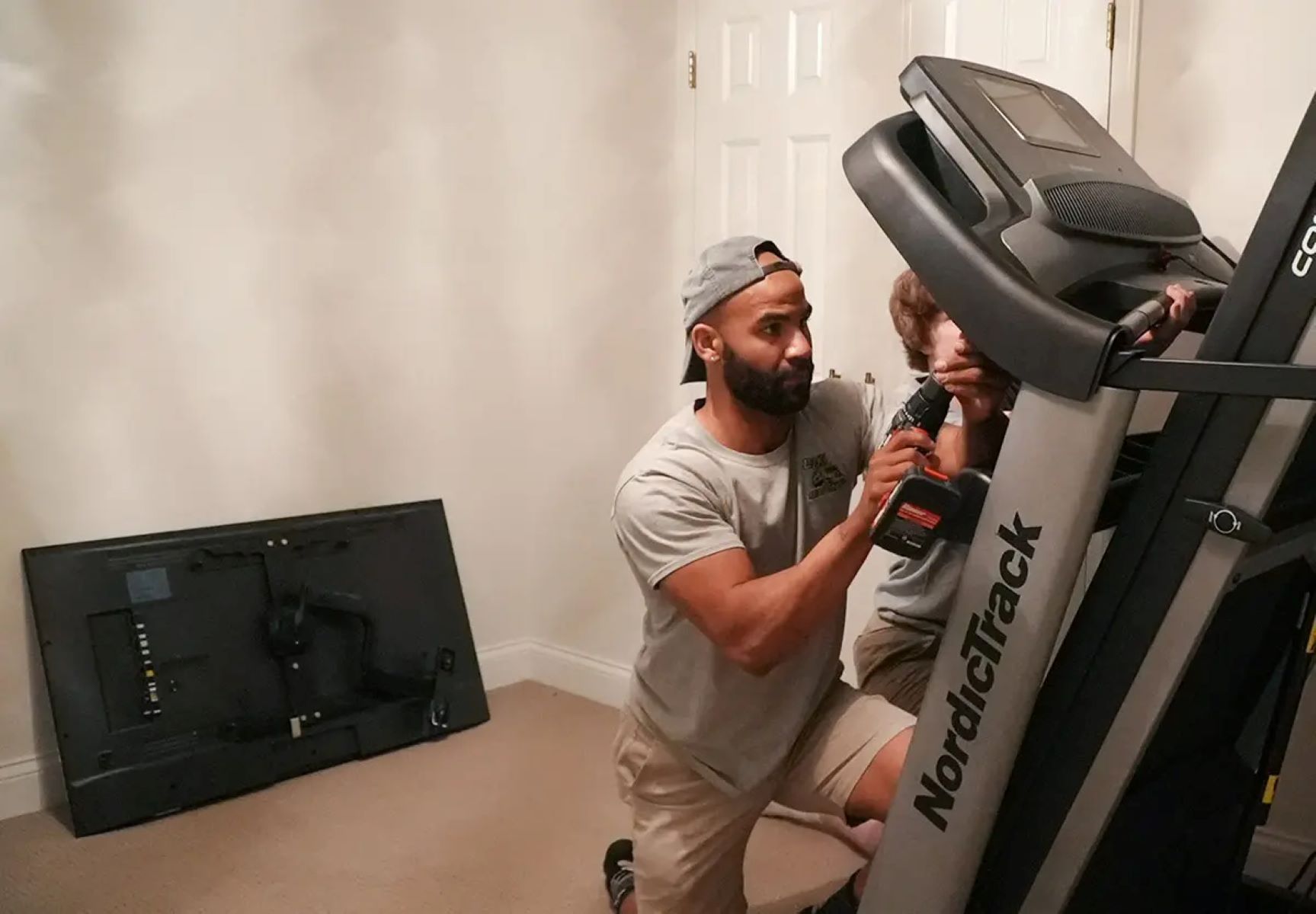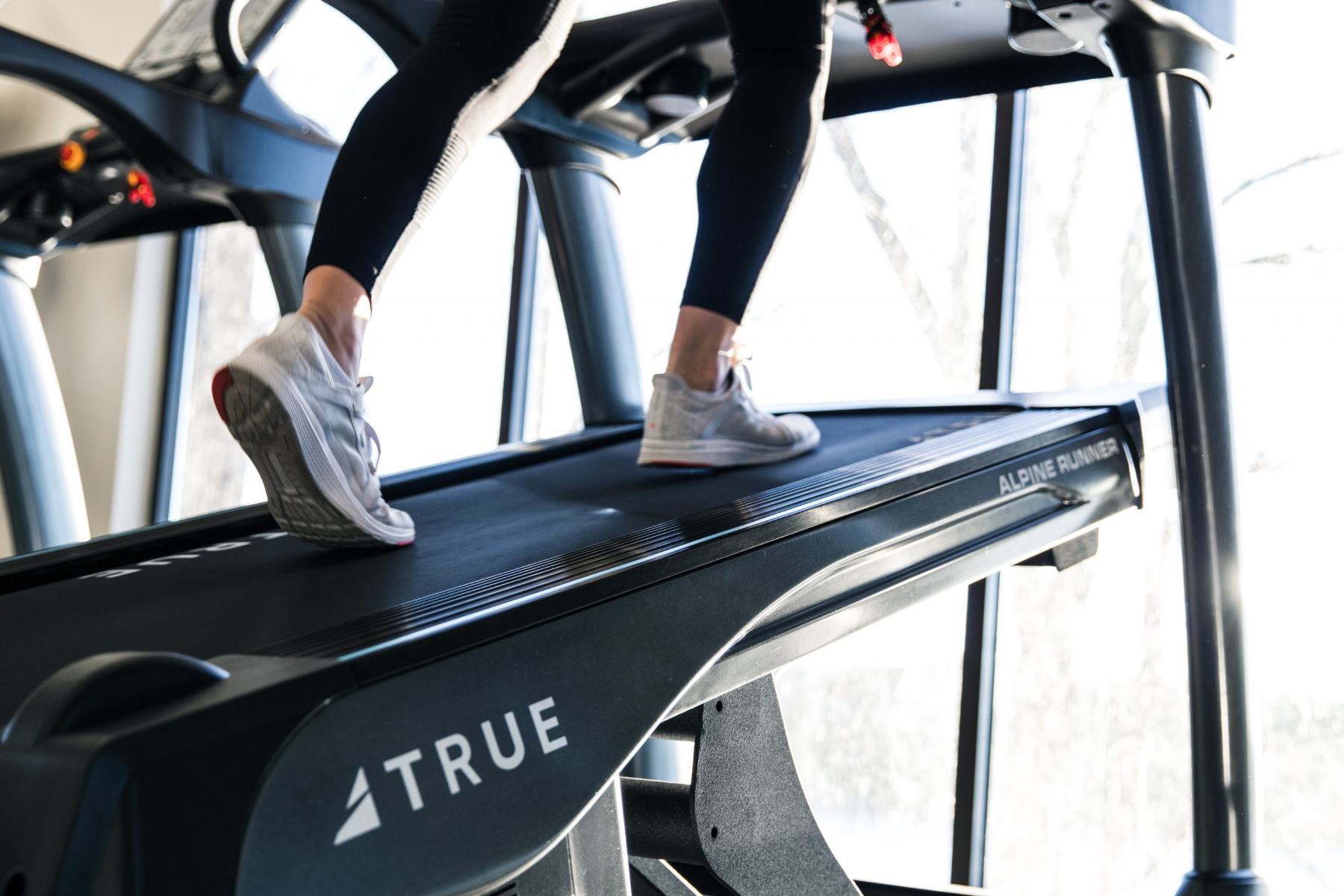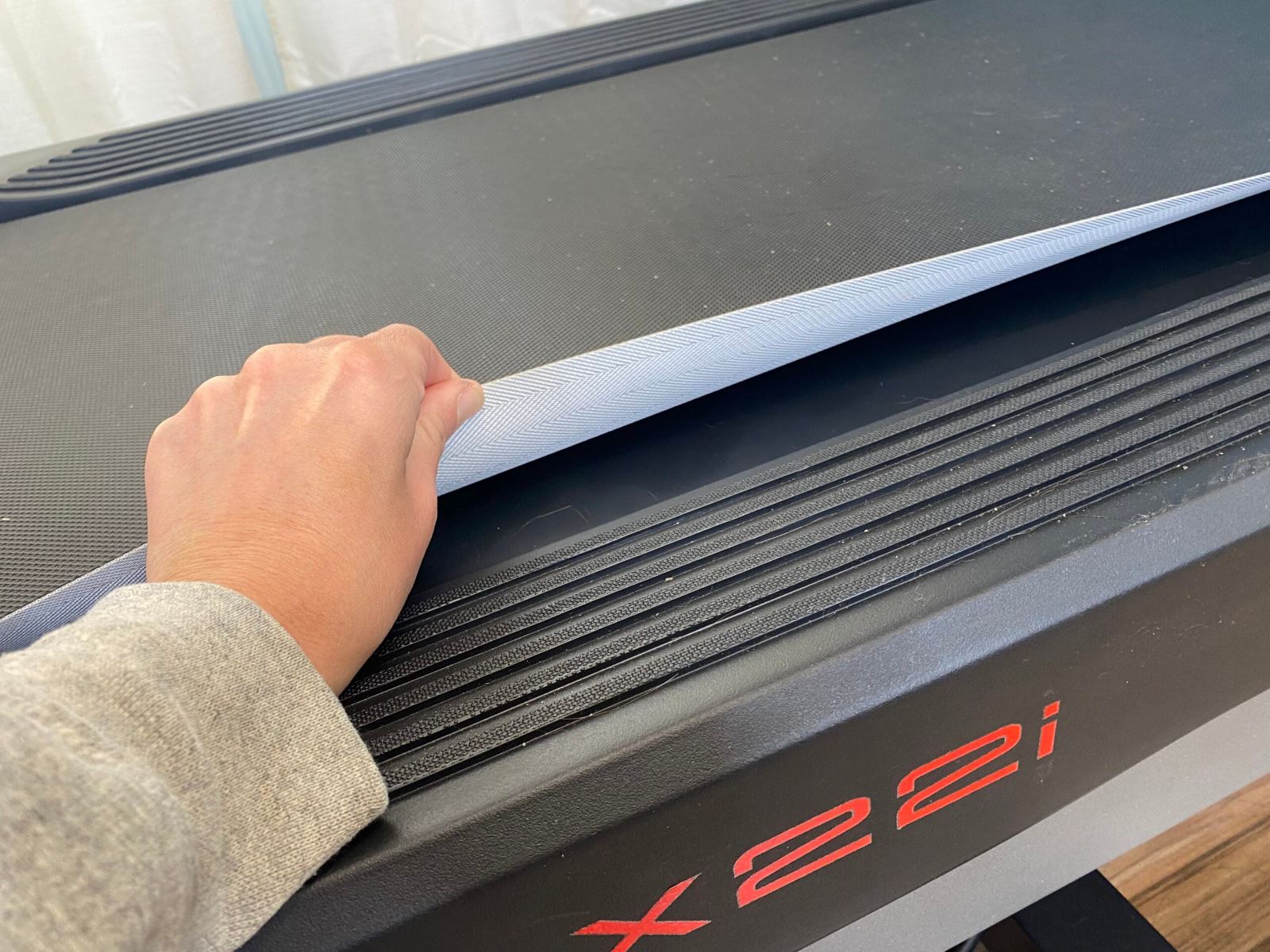

Featured
How To Tell If Treadmill Belt Is Tight
Modified: August 18, 2023
Discover how to determine if your treadmill belt is properly tightened with this step-by-step guide. Stay on track with our featured tips and tricks for a smooth workout.
Introduction
Welcome to the world of home fitness, where treadmills have become a popular choice for staying active and getting in shape. Whether you’re a seasoned runner or just starting out, having a properly functioning treadmill is essential for a safe and effective workout. One crucial component of a treadmill is its belt, which provides the surface you walk or run on.
Understanding how to maintain and adjust the treadmill belt is vital to ensure optimal performance and prevent any potential injuries. A common issue many treadmill owners face is determining whether the belt is too tight or too loose. A belt that is too loose can cause slippage and fluctuations in speed, while a belt that is too tight can put unnecessary strain on the motor and cause excessive wear.
In this article, we will explore the signs of a loose or tight treadmill belt and provide step-by-step instructions on how to check and adjust the treadmill belt tension. By learning these techniques, you will be able to optimize your treadmill’s performance, prolong its lifespan, and most importantly, exercise safely.
Understanding the Treadmill Belt
Before diving into the signs and adjustments for a tight or loose treadmill belt, let’s first understand the components and mechanics of the treadmill belt itself. The treadmill belt, also known as the running belt or conveyor belt, is made of durable material and is responsible for providing the running surface.
Treadmill belts are typically made from PVC or rubber material, designed to withstand repeated use and friction. The belt is attached to the treadmill’s deck, which supports the user’s weight and provides stability while walking or running.
To ensure smooth and consistent movement, treadmill belts are equipped with rollers at either end. The front roller is connected to the motor and helps drive the belt, while the rear roller allows for proper tension and alignment.
Treadmill belts also feature a tensioning system that allows users to adjust the tightness or looseness of the belt. This adjustment is necessary to accommodate different user preferences and to prevent excessive wear on the belt and the treadmill’s motor.
Understanding the mechanics and components of the treadmill belt is crucial for troubleshooting any issues related to its tension. Whether you are experiencing slippage, noise, or overall performance problems, correctly determining the state of the belt’s tension is the first step toward resolution.
Signs of a Loose Treadmill Belt
A loose treadmill belt can cause a variety of issues that can negatively impact your workout experience. Here are some common signs to look out for that indicate your treadmill belt may be too loose:
- Slippage: If you notice that the belt slips or slides forward as you walk or run, it’s a clear indication that it’s too loose. This can result in an unstable and potentially dangerous workout.
- Uneven Belt Movement: A loose belt may exhibit uneven movement, with one side moving faster or slower than the other. This can create an uneven running surface, increasing the risk of tripping or falling.
- Noise and Friction: When the belt is loose, it can create excessive noise and friction as it rubs against the treadmill’s components. This can lead to extra wear and tear on the belt and other parts of the machine.
- Inconsistent Speed: A loose belt may cause fluctuations in speed during your workout. You may notice sudden changes in pace or difficulty maintaining a consistent running speed.
- Lack of Resistance: When the belt is loose, you may experience a lack of resistance, making your workout feel less challenging. This can affect your ability to achieve desired fitness goals.
If you observe any of these signs, it is crucial to address the issue promptly to prevent further damage to your treadmill and ensure a safe and effective workout. Checking and adjusting the tightness of the belt will be necessary to resolve these problems.
Signs of a Tight Treadmill Belt
While a loose treadmill belt can cause issues, a belt that is too tight can also have negative consequences. Here are some signs that indicate your treadmill belt may be too tight:
- Difficulty Starting: If you find it challenging to start or get the treadmill belt moving, it may be a result of excessive tightness. This can strain the motor and prevent a smooth transition from a stationary position to walking or running.
- Excessive Noise: When the belt is overly tight, it can lead to increased noise levels during your workout. You may hear squeaking or grinding sounds as the tightly stretched belt rubs against the treadmill’s components.
- Excessive Wear: A tightly tensioned belt can result in accelerated wear and tear on both the belt itself and the treadmill’s motor. This can lead to costly repairs and a shorter lifespan for your equipment.
- Uneven Belt Wear: A belt that is too tight might exhibit uneven wear patterns. You may notice excessive wear in certain areas of the belt while other regions remain relatively untouched. This can further contribute to belt degradation and affect your workout experience.
- Motor Overheating: When the belt is excessively tight, it puts extra strain on the treadmill’s motor, causing it to overheat. This can result in unexpected shutdowns or a decrease in overall performance.
If any of these signs are present, it’s essential to address the tightness of your treadmill belt promptly. Continuing to use a treadmill with a belt that is too tight can lead to further damage to the equipment and potential injury to the user. Regular maintenance and adjustment of the belt’s tension will help ensure a smooth and safe workout experience.
How to Check if the Treadmill Belt is Too Tight
Checking the tension of your treadmill belt is a crucial step in ensuring optimal performance and preventing any potential issues. Here’s how you can check if your treadmill belt is too tight:
- Power Off: Before starting any inspection or adjustment, make sure that your treadmill is powered off and unplugged. This is for your safety and to avoid any potential accidents.
- Manual Testing: Stand on the side rails of the treadmill and firmly grip the handrails or the upright support. Try to lift the edge of the treadmill belt in the middle of the deck. It should lift around 2-3 inches. If the belt does not lift or is difficult to lift, it may be too tight.
- Ease of Movement: While the treadmill is still powered off, move the belt with your hand. It should move smoothly and with moderate resistance. If it feels too stiff and difficult to move, the belt may be too tight.
- Visual Inspection: Inspect the treadmill belt for any signs of excessive wear or damage. Look for uneven wear patterns, fraying, or tears in the belt. These issues can indicate that the belt is too tight.
- Listen for Noise: Once you power on the treadmill, listen for any unusual noises coming from the belt. If you hear excessive squeaking or grinding sounds, it may be a sign that the belt is too tight.
By following these steps, you can determine if your treadmill belt is too tight. If you have confirmed that the belt is indeed too tight, it’s crucial to make the necessary adjustments to ensure a safe and effective workout.
How to Adjust a Tight Treadmill Belt
If you have determined that your treadmill belt is too tight, don’t worry, as adjusting the tension is relatively straightforward. Here’s a step-by-step guide on how to adjust a tight treadmill belt:
- Power Off and Unplug: Before making any adjustments, ensure that your treadmill is powered off and unplugged. Safety should always be the top priority.
- Locate the Tension Adjustment Bolts: Most treadmills have tension adjustment bolts at the back or sides of the machine near the belt. Refer to your treadmill’s user manual to find the exact location for your specific model.
- Loosen the Bolts: Using the appropriate tool (such as a hex wrench or Allen key), loosen the tension adjustment bolts a few turns counterclockwise. This will relieve some of the tension on the belt.
- Test the Belt Tension: With the adjustment bolts slightly loosened, power on the treadmill and test the belt’s tension. Walk or run on the treadmill at a slow speed and observe if the belt feels more relaxed and moves smoothly without any unnecessary resistance.
- Make Further Adjustments: If the belt is still too tight, continue loosening the adjustment bolts incrementally, testing the tension after each adjustment. Be cautious not to loosen the belt too much, as it can become too loose and lead to slippage.
- Evenly Adjust Both Sides: Ensure that you adjust the tension bolts evenly on both sides of the treadmill to maintain proper alignment and movement of the belt.
- Test and Fine-Tune: Once you have achieved the desired tension, test the treadmill at various speeds to confirm that the belt remains secure and smooth.
Remember, it’s essential to make small adjustments and test the belt’s tension after each change. This gradual approach will help you achieve the optimal tension for a safe and effective workout.
If you’re unsure about adjusting the tension yourself, consult your treadmill’s user manual or contact the manufacturer’s customer support for guidance and assistance. They can provide specific instructions based on your treadmill model.
Conclusion
Maintaining the proper tension of your treadmill belt is crucial for a safe and effective workout. A loose belt can cause slippage and inconsistent speed, while a tight belt can strain the motor and lead to excessive wear. By understanding the signs of a loose or tight treadmill belt and knowing how to check and adjust the tension, you can ensure optimal performance and prolong the lifespan of your equipment.
Regularly inspecting your treadmill belt for signs of wear, and conducting simple tests to assess the tension, will help you identify any issues early on. If you determine that the belt is too loose or too tight, make the necessary adjustments following the manufacturer’s instructions or seeking professional assistance if needed.
Remember to always prioritize safety when working with your treadmill. Power off and unplug the machine before making any adjustments, and proceed with caution when loosening or tightening the tension adjustment bolts.
By properly maintaining and adjusting your treadmill belt, you can enjoy a smooth and comfortable workout experience. Regular maintenance, including cleaning, lubrication, and belt tension adjustments, will help prolong the life of your treadmill and ensure that you can continue to reach your fitness goals.
So, take the time to check and adjust your treadmill belt’s tension, and enjoy a safe and effective workout every time.
